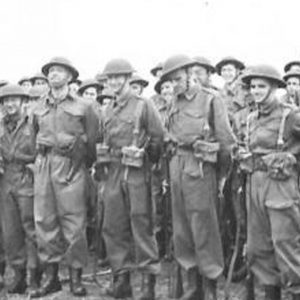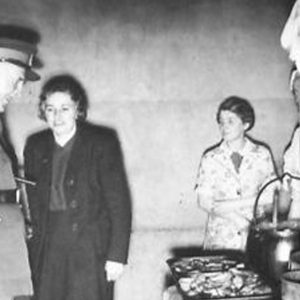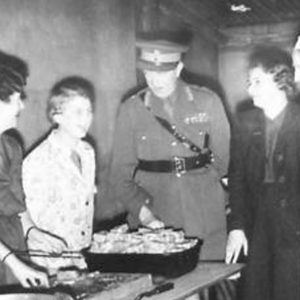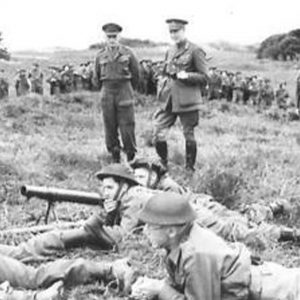Murlough House stands overlooking Dundrum Bay in Co. Down. The house remains a private dwelling although the grounds, which include a 6,000-year-old sand dune system belong to the National Trust.
The name Murlough comes from the Old Irish word ‘Muirbolc’ meaning ‘sea-bag’ or an inlet from the ocean. Humans have lived and worked in the area for thousands of years and members of the United States Army noted with awe the history of the place on their arrival in wartime.
As well as the large house, other listed buildings remain within the National Trust property. These include a Grade B1 Stable Block, the Grade B Keel Point Gate Lodge, and the Grade B2 Downshire Bridge. Other buildings including a boathouse and Slidderyford Cottage also remain on the Co. Down peninsula. A former Rifle Range at the northern end of the peninsula and a possible Tank Park on the south of the approach road to the house are all that remain from the Second World War.
During the Second World War, the area surrounding Murlough House also included an airstrip, while the large military barracks at Ballykinler lay just across Dundrum Bay. Remains of poles to prevent an enemy landing and the concrete rubble of a collapsed pillbox remain on the nearby beaches.
The Ulster Home Guard
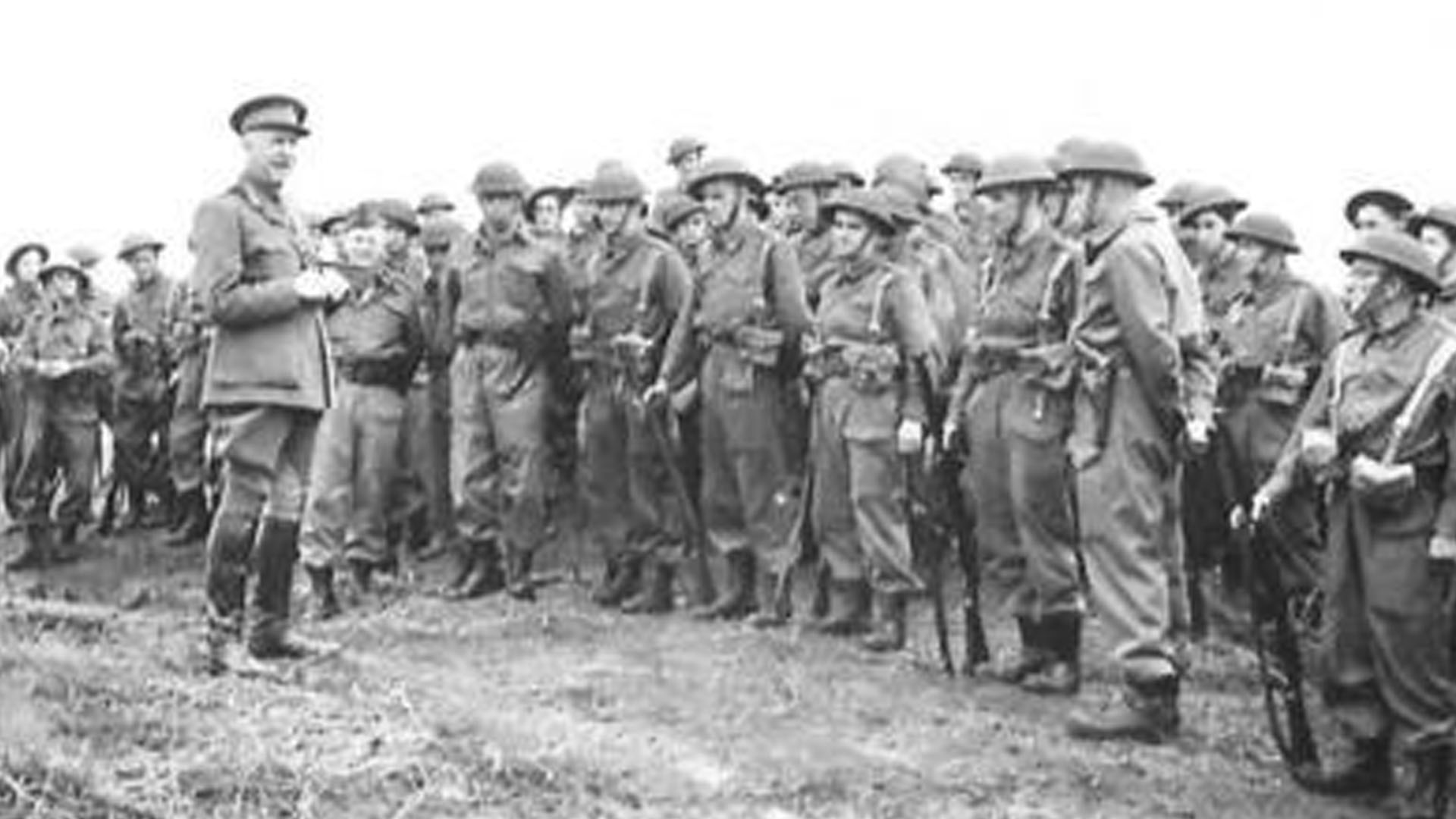
Imperial War Museum Photo: (H 30677) (Part of the War Office Second World War Official Collection). Lieutenant General Franklyn speaks to the volunteers of 3rd Down Battalion, Ulster Home Guard about the importance of their training at Murlough House, Dundrum, Co. Down on 8th June 1943. Copyright Lieutenant J.R. Bainbridge - War Office Photographer.
American Forces
The following American forces were based in Murlough House, Co. Down between 1942 and 1944.
| Start Date | End Date | Unit |
|---|---|---|
| 1942 | 1st Battalion, 13th Armor (1st Armored Division) | |
| 29th April 1944 | 818th Tank Destroyer Battalion (XV Corps) |
In ‘Armor Command: The Personal Story of a Commander of the 13th Armored Regiment’, Brigadier-General Paul McDonald Robinett wrote fondly of his time in Dundrum, Co. Down.
By dark, 18 May 1942, all personnel aboard the Queen Mary destined for Ireland had passed through the bombed port of Belfast, where the British served refreshments, to detraining points. My own was near Camp Ballykinler, which, with Murlough House, was to be the home of the 13th Armored Regiment.
The Irish countryside was indeed picturesque – a patchwork of small fields enclosed by high stone fences or hedges white with bloom, and dotted with neat, thatch-roofed houses. The Dundrum Bay area where we detrained was particularly beautiful.
To the west could be seen the blue mass of Slieve Donard, the highest peak of the Mourne Mountains, which rises to a height of about 3,000 feet above the wide sandy beach of Newcastle. The lush green fields of County Down extend back from the bay, rising occasionally to low hills upon one of which could be seen the decaying tower of a very ancient castle standing in a clump of great trees.
Not far away a careful observer could also detect a crude stone structure or dolmen of the pagan Druid people. We were in a lovely but ancient land – a picture land where tribe after tribe had met, clashed, and intermixed and left their races in the hardy race Americans call Scotch-Irish, from which many of us now returning, drew at least a part of our blood.
Seeing these sights my thoughts turned to Don Byrne’s story, ‘Destiny Bay’. It seemed to me that picturesque Dundrum Bay could well be his mythical bay.
Ulster Sea Cadets
On 15th July 1943, Rear-Admiral R.H.L Bevan carried out an inspection of the Ulster Sea Cadet Corps at Murlough House. He was accompanied by former Prime Minister John Miller Andrews M.P., the Marquess of Londonderry, Lieutenant Commander Philip Smiles (District Officer of the Sea Cadets for Northern Ireland), and Surgeon Lieutenant N.F.E. Burrows (Camp Medical Officer).
The Sea Cadets, totalling a number of 350, trained at the camp for a week from 10th July 1943 to 17th July 1943. They came from Belfast, Derry/Londonderry, Coleraine, Bangor, Larne, and Donaghadee. The role of such camps was to train young men aged 14 to 17 years old for life in the Royal Navy and this was the first of its kind in Ulster.
During their time at Murlough House, the Cadets took part in Squad Drill, Physical Training, Signals, Boat Work, Compass Navigation, Bends and Hitches, Swimming, and Commando Training.
At the end of the inspection, Mr. Andrews M.P. handed out prizes. Lieutenant J.W. Sandford of the Larne District picked up the silver cup Efficiency Trophy. The Larne outfit also received a model of H.M.S. Javelin for excellence in Squad Drill. The young men from Belfast No. 2 Victory Unit received the Physical Training trophy awarded to Lieutenant G.C.H. Siggins.
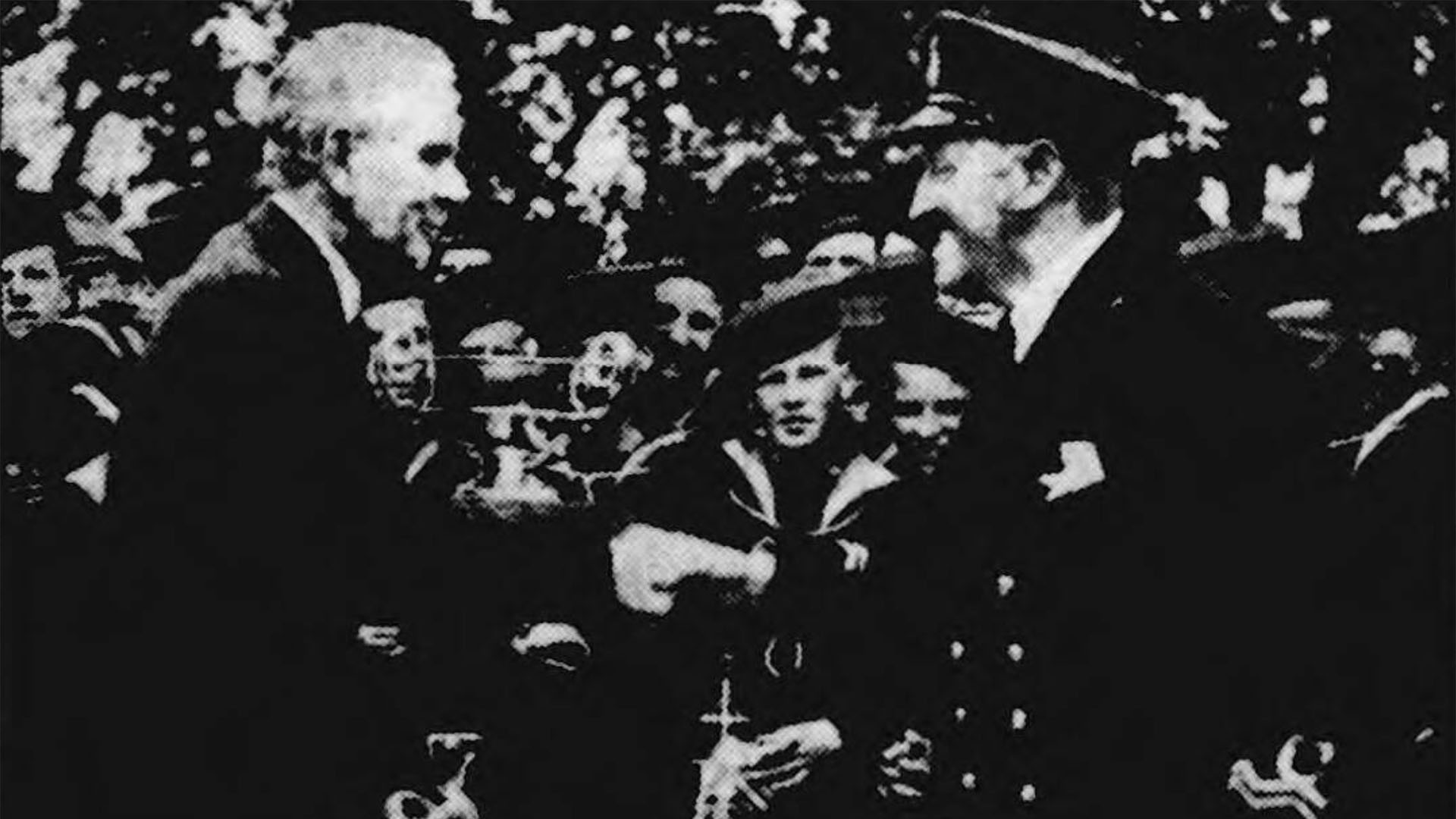
British Newspaper Archive Photo: Former Prime Minister of Northern Ireland, Mr. John Miller Andrews M.P. presents a trophy to Lieutenant J.W. Sandford of the Ulster Sea Cadets (Larne) during a training camp at Murlough House, Dundrum, Co. Down on 15th July 1943. Copyright Larne Times - Thursday 22nd July 1943.
Other visitors to the camp had included Lord Justice Murphy and Captain the Earl of Kilmorey. The Officers present at the camp were Lieutenant J.W. Sandford (Larne), Sub-Lieutenant Denis D. McCutcheon (Coleraine), Lieutenant J.W. Thompson (Belfast No. 3), Sub-Lieutenant A.W. Gordon (Belfast No. 1), Lieutenant G.C.H. Siggins (Belfast No. 2), Lieutenant J. McClure (Bangor), Lieutenant S.J. Rhodes (Donaghadee), and Lieutenant Gregg (Derry/Londonderry).
Reminders of War
On Thursday 18th February 2016, the Police Service of Northern ireland and the Coastguard sealed off an area of the beach at the Twelve Arches, not far from Murlough House. A walker had discovered a 2″ Mortar dating to the Second World War while walking the shoreline at around 1700hrs. Army bomb disposal experts arrived at 0630hrs on 19th February 2016 to carry out a controlled explosion 45 minutes later.
This was not the first time authorities had to deal with unexploded ordnance in the vicinity of Murlough House. On 9th July 1947, Mr. D.J. McNeill, the Principal of Downpatrick Technical School and his brother-in-law Henry Fitzpatrick came across a pair of unexploded bombs in the sand dunes. In this case, controlled explosions were carried out by experts from the Ballykinler Camp and the local Royal Ulster Constabulary from Dundrum, Co. Down.

